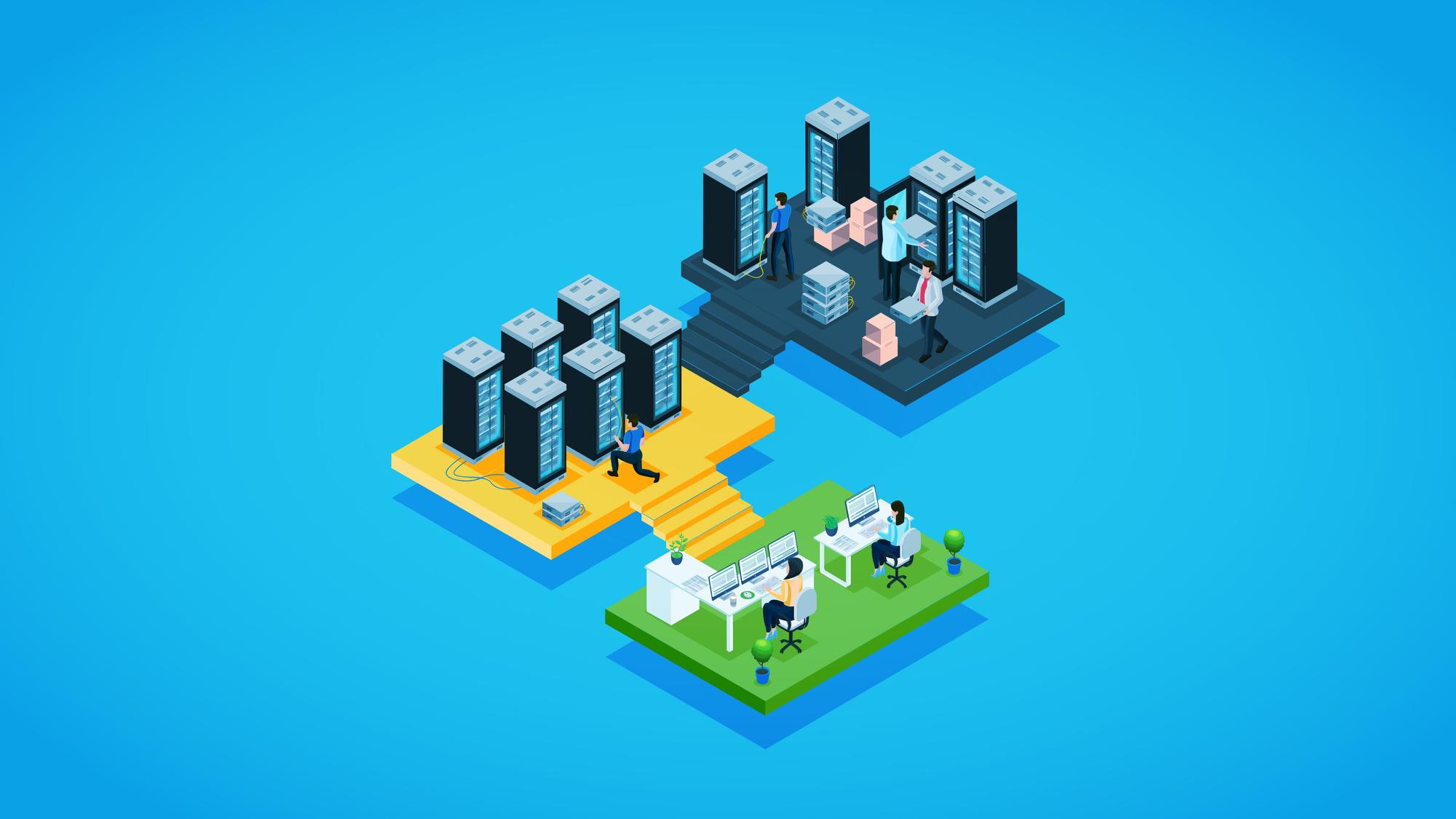By Luke Smith · 2/6/2020

This is part one of Data Center Fundamentals, datacenterHawk’s guide to getting up to speed on the data center market. If you’re a new participant in the industry, then this is for you. Instead of analyzing deep market trends, we’ll be covering the basics one step at a time. Be sure to subscribe to our monthly update to know when we release future topics.
If you would like to sign up for our free official Data Center Fundamentals email course, click here.
What is a data center?
A data center is a space or building designed to house the servers that keep a company’s technology running. This can range from a small closet with a handful of servers in an office to entire buildings dedicated to housing thousands of servers.
All companies utilize data center infrastructure. Anything happening online runs through a data center - whether it be credit card transactions, sending emails, posting to social media, streaming sports, or storing medical information. Even the cloud is located in data center facilities across the world.
Our world today relies on this IT infrastructure more than ever and the need is continuing to increase. According to Infiniti Research, the global data center market is anticipated to grow by over $270 billion between 2020-2024.
Why are data centers critical to our life?
Given the wide range of companies a data center can support, these facilities need to be more than just a building with servers inside.
If a data center has downtime or an outage, then the technology it supports could stop working. If you lose a photo because it couldn’t back up to the cloud, it might not be a big deal. But if you lose the medical records of 10,000 patients or can’t relay an emergency message then those outages could cost lives.
From a company perspective, an outage is no small cost. The average cost of a data center outage in 2015 was more than $700,000. That equates to more than $9,000 per minute of down time not to mention the hit a company would take from a brand equity or customer trust perspective.
What are the important aspects of a data center?
Given the critical nature of data centers a company’s operations, data center operators have invested heaviliy to ensure to ensure their facilities stay online. There are several aspects that go into keeping a data center online.
1. Safe from natural disasters
A data center’s location is important. Every region comes with its own hazards and data centers are designed to mitigate the risks associated within that region. Most are built to withstand winds of 125+ mph, high scale earthquakes, and are located outside of flood plains.
2. Highly secure
Planning to reduce risk also means securing a data center from man-made hazards. Most of these facilities are surrounded by high-grade perimeter fencing with controlled gate access. Inside, 24/7 security personnel, man-trap entrances, biometric scanners, card key access and floor to ceiling steel caging all help to ensure a company’s data center environment is well protected.
3. Powered
Data centers consume 3% of our world’s electricity, and the best way to understand a data center’s size is to recognize how much power is being utilized at the site. Data centers can be measured in square footage but are more accurately measured in power. Servers consume power at a relatively consistent rate, meaning the overall power needs of a data center is a more accurate indicator of the size of a facility. A single rack of servers in a data center consumes between 2-10 kilowatts (kW) of power, while the entire data center facility can consume between 5-75 megawatts (MW), depending on the user.
4. Redundant
Having systems in place to handle a negative equipment event is critical for data center success. Data centers typically have redundant transformers, uninterruptible power supply (UPS), backup generators, and cooling systems to keep the facility online at a ll times.
5. Connected
A well connected data center includes a high number of fiber providers located at the site, which provides a company flexibility with the fiber providers they want to use for the business operations.. Data centers have low-latency access to the surrounding area, the rest of the county, and even international markets.
6. Cool environments
Servers produce a significant amount of heat. Temperature control is one of the primary limiting factors on how large a data center can be. In theory, power providers can deliver hundreds of megawatts to a data center, but a data center’s size is limited by the amount of power it can cool. It’s standard for a data center’s cooling capacity to range from 2-10 kW per rack, but new technology is now allowing organizations to achieve higher densities with their footprint.
7. Compliant
Most industries have strict methods, procedures, and standards around operations. This also applies to how they store their data, meaning a data center must meet that industry’s requirements for a company to use it. Data center compliances focus on a range of subjects, but often involve the security, redundancy, and operational risk of a data center.
8. Expensive
Data centers require a high degree of specialization and design, which leads to a higher cost to build and operate a data center. Traditional estimates are as 10 times more expensive than traditional office space.
Data centers require many different components and a high degree of operational expertise. While some companies choose to operate their data center infrastructure themselves, most now outsource their data center needs to a data center colocation or cloud provider. Regardless of the strategy, companies’ data center needs are only projected to increase.
This was part one of Data Center Fundamentals, datacenterHawk’s guide to getting up to speed on the data center market. Be sure to subscribe to our monthly update to know when we release future topics.
